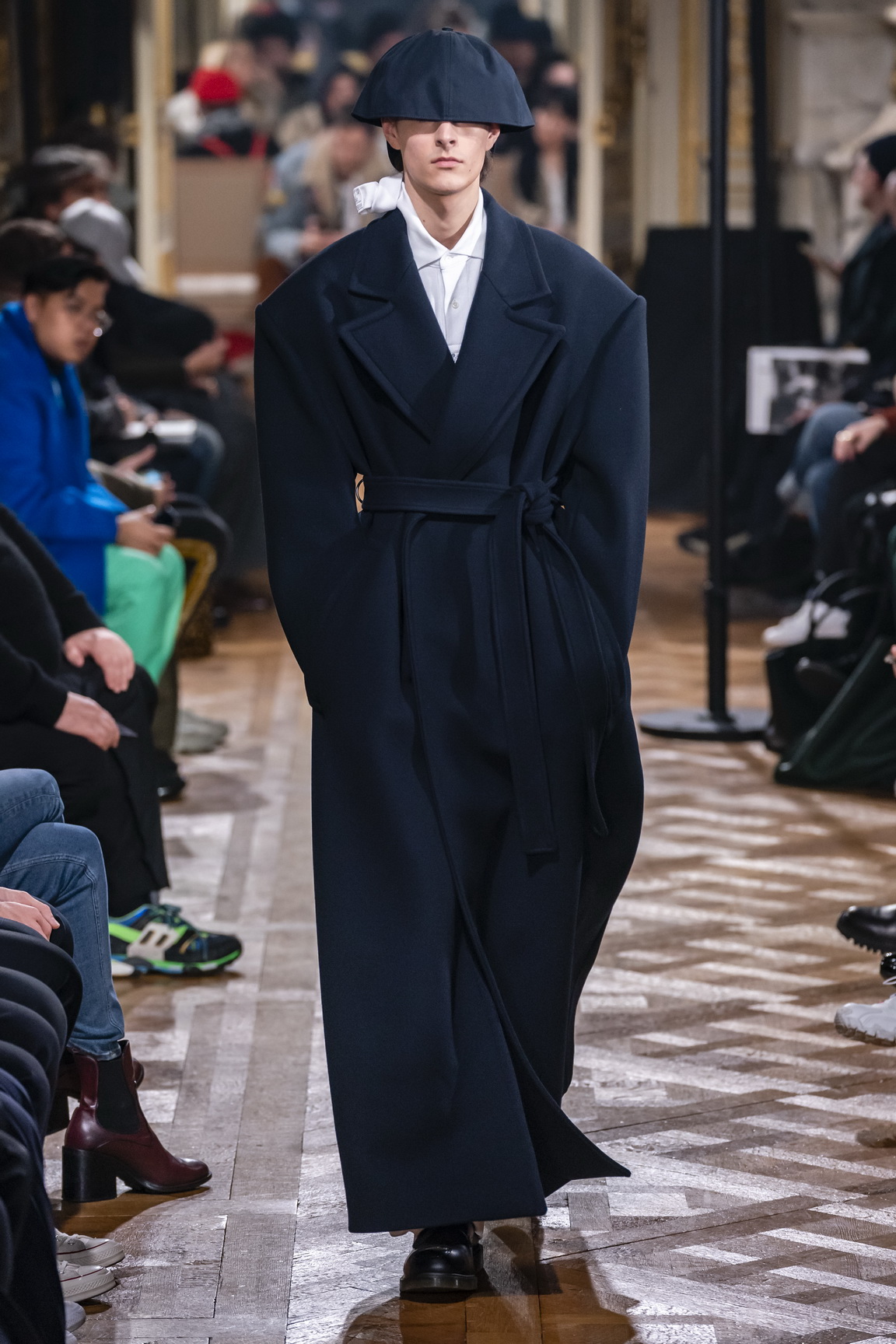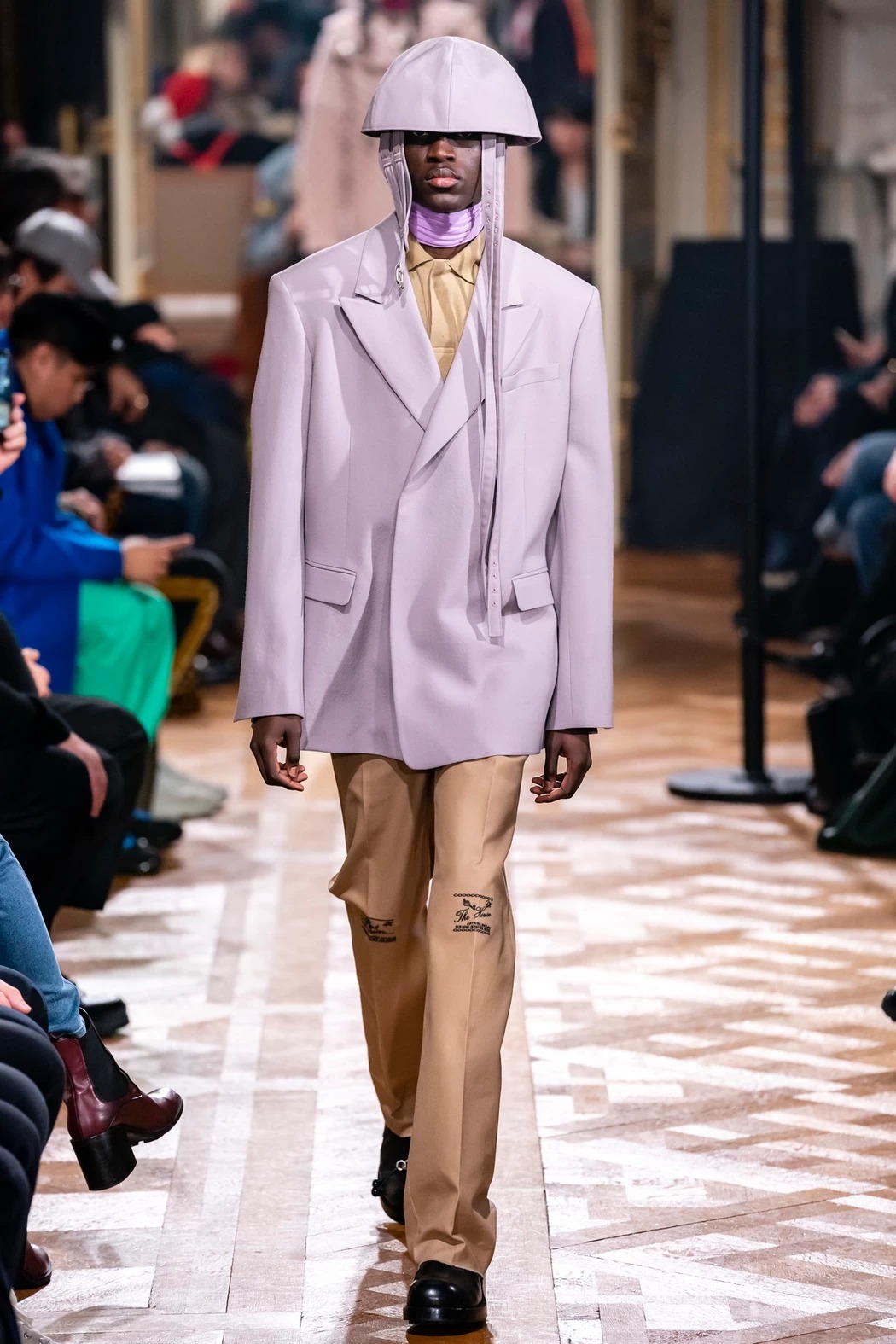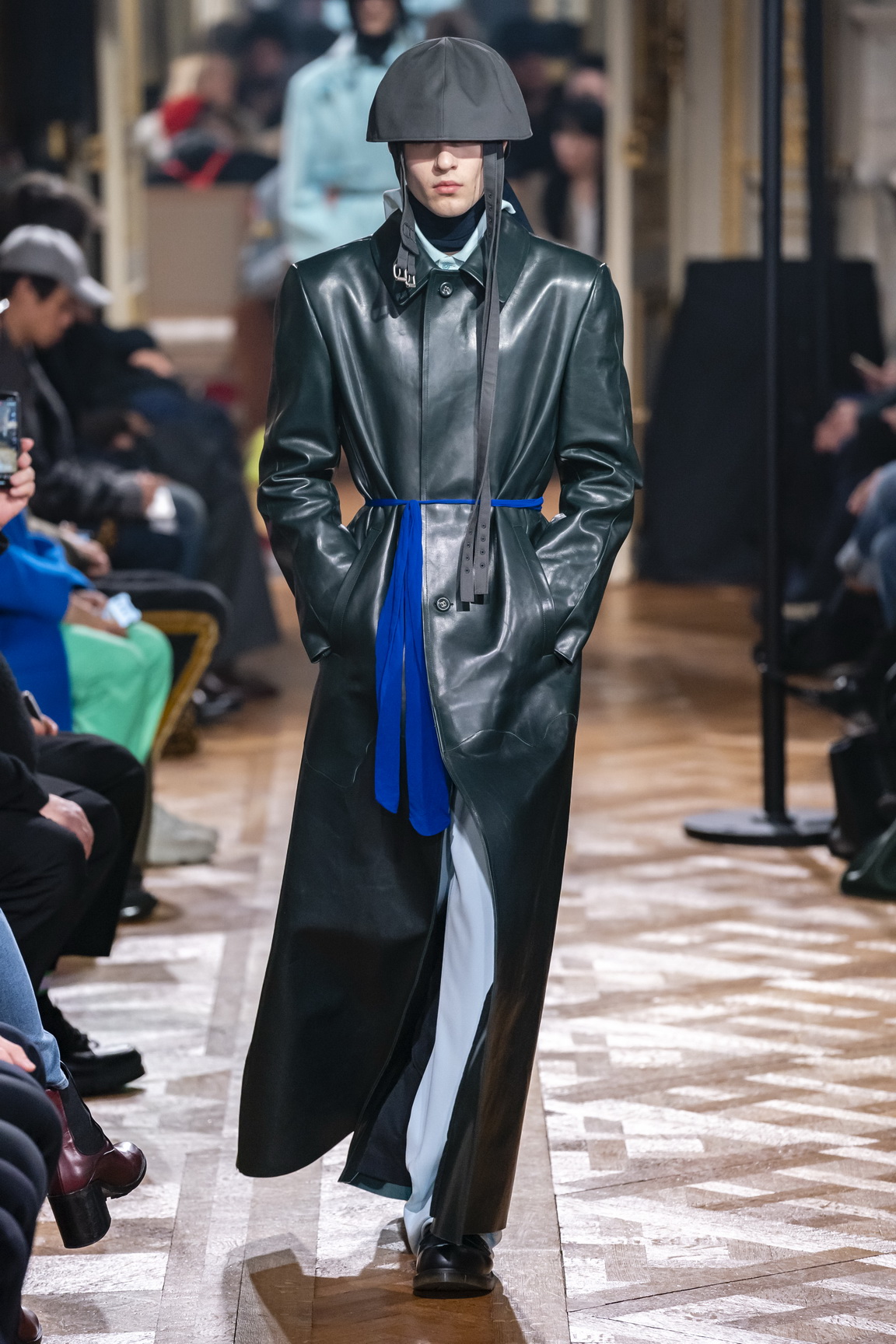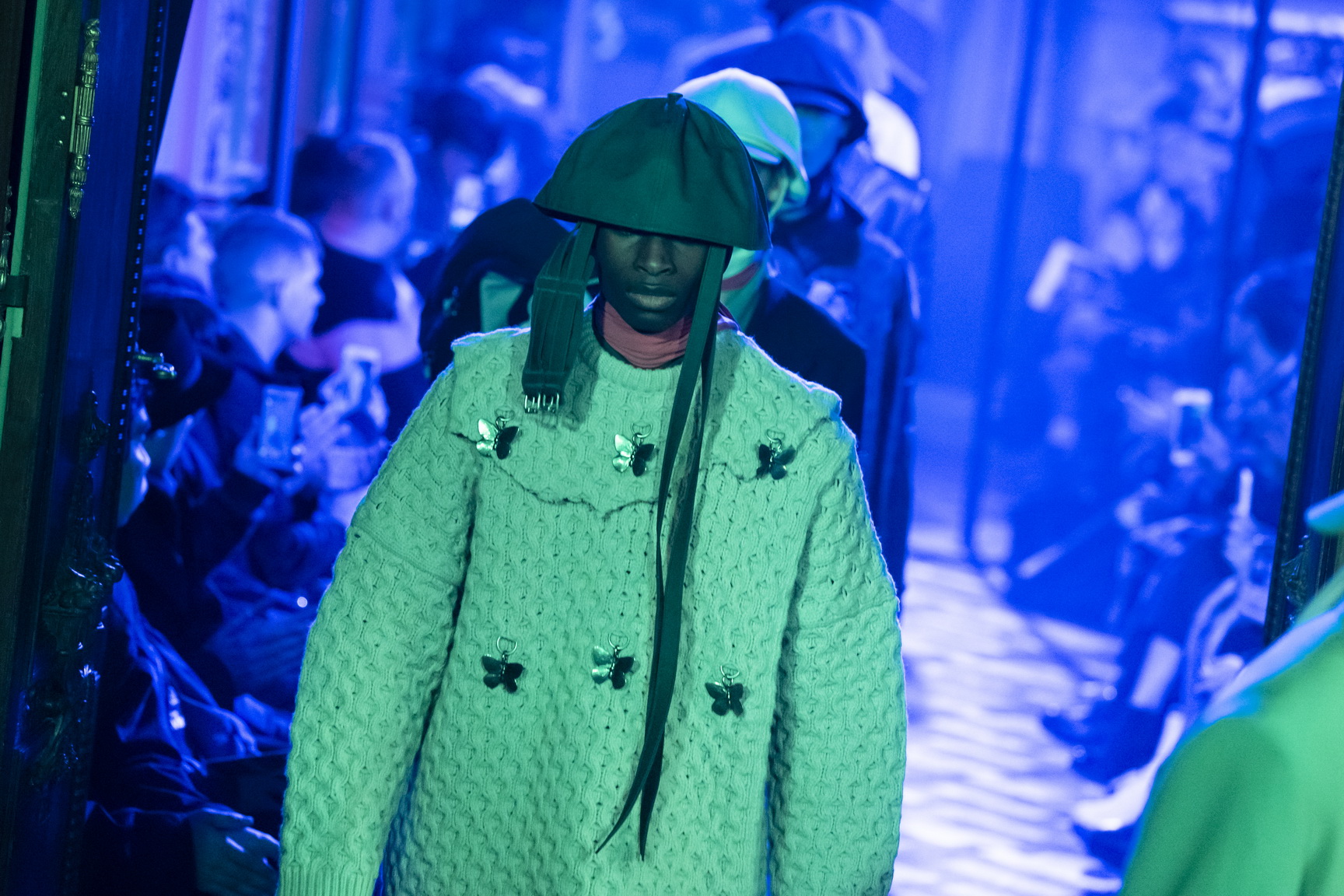Raf Simons’s first eponymous show since his departure from Calvin Klein was pure Raf Simons; Joy Division on the soundtrack, a Belgian post-punk playing live, David Lynch film stills on the clothes. It was a sartorial demonstration of his attitude, his past, his present and his future. The black hearts that filled Instagram following the news back in December, had been replaced with raised hands in celebration. The king is dead, long live the king!
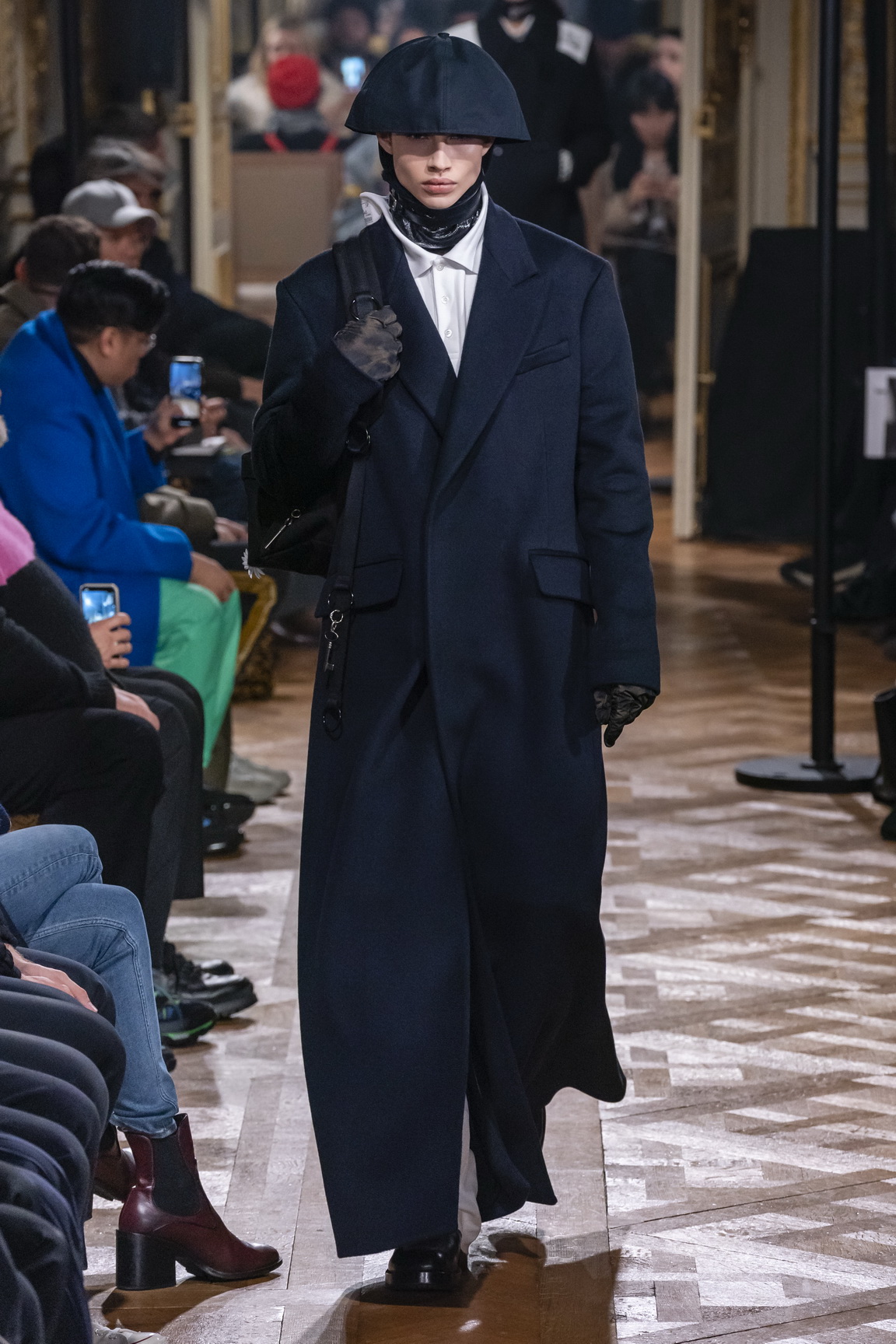
“This collection was completed way before all that hassle,” Raf explained post-show, surrounded by well-wishers. So this defiant David Lynch-inspired creative call to arms wasn’t a direct reaction to his employment status but a counterpoint to today’s turbulent sociopolitical times. “I think the basis of everything is causing trouble, but at the same time I don’t want to sound negative because I feel like it’s so interesting to think of what could come.”
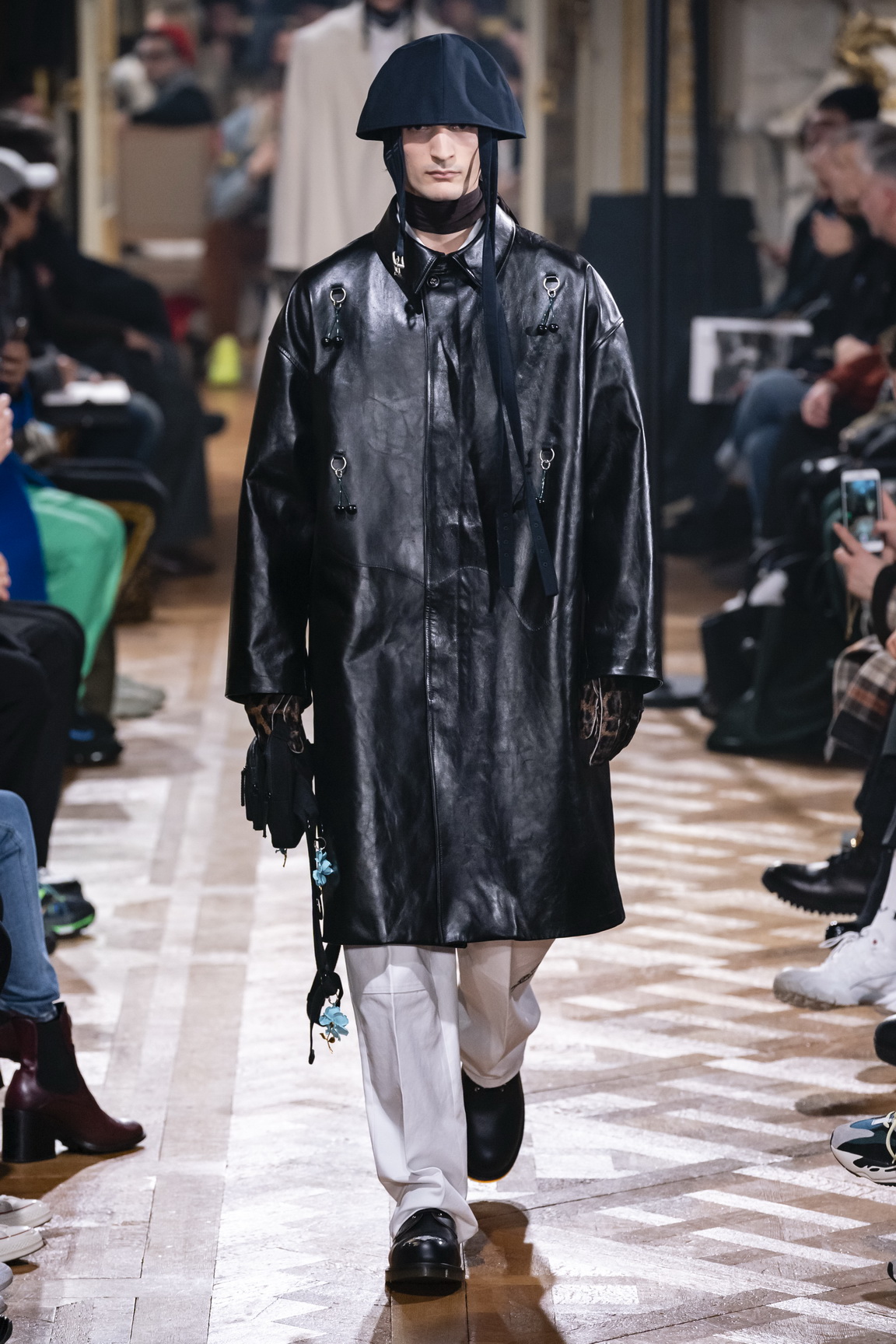
From the moment he launched his eponymous label in 1995, Raf Simons has used it to reject and challenge, countering the sexed-up menswear aesthetic of the time by presenting his own skinny-suited, relentlessly youthful reality. “I saw all this fiction — tanned, handsome guys — it was opposite to the world I wanted to represent,” Raf Simons explained to Jo-Ann Furniss inside his guest edited issue of i-D (The Inspiration Issue, No. 206, February 2001). As much inspired by his friends in the Antwerp punk scene as designers like Martin Margiela and Helmut Lang, his vision was darker, dirtier and more underground than anything we had seen before. 24 years on, a cult following and a number of successful creative director roles later and the Belgian-born genius continues to challenge the system by looking to his own reality, collaging his life, loves and obsessions. Far from nostalgic, these glances back continually push possibilities and lead us to new, furiously energised places. “I don’t want to show clothes, I want to show my attitude,” is the declaration on the rafsimons.com website. “I use memories and future visions and try to place them in today’s world.”
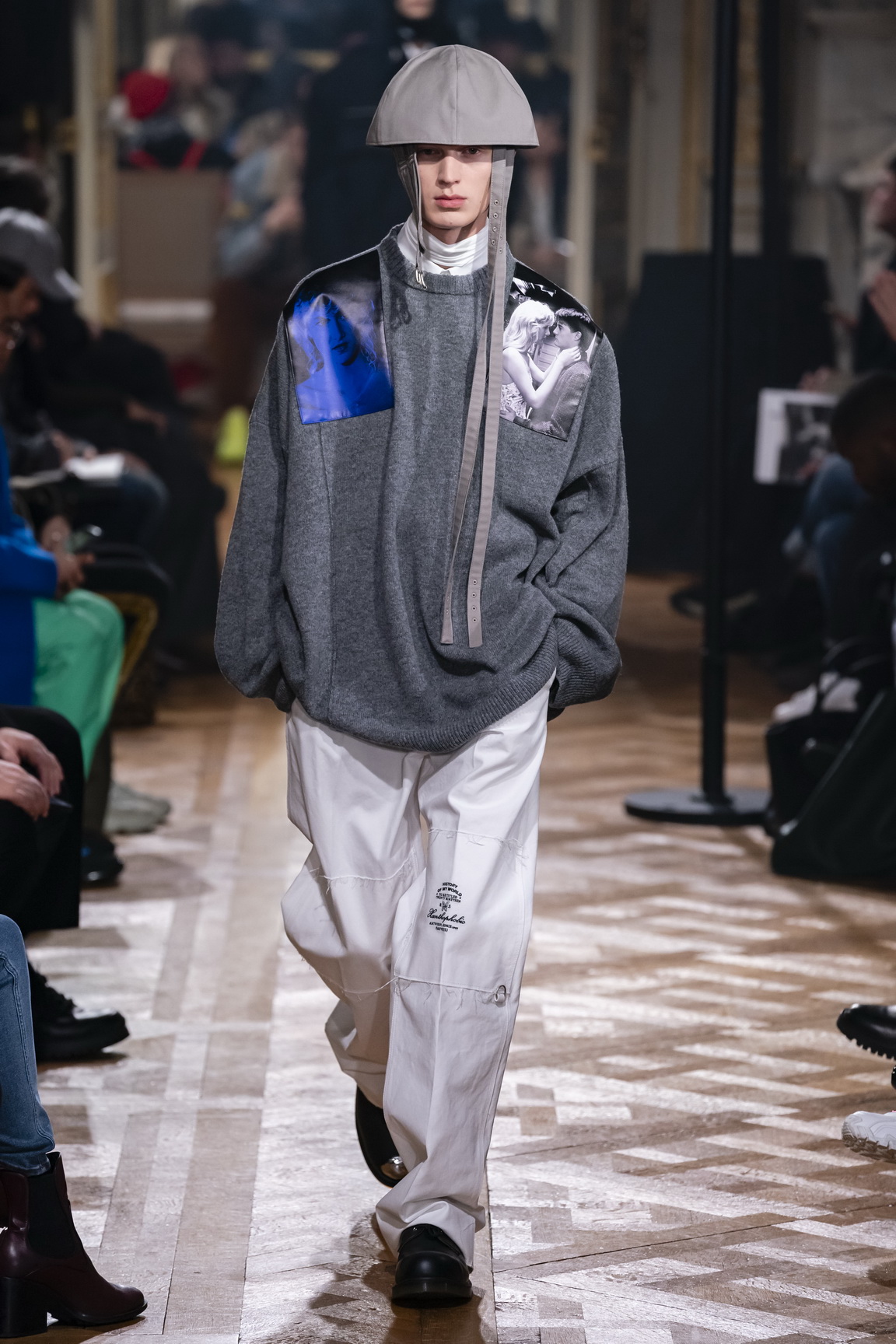
As ever with Raf Simons, this show blurred boundaries between past, present and future. His autumn/winter 16 collection, the first post-Dior, was a love letter to David Lynch because the show coincided with the director’s birthday. Three years and another creative director role departed and Raf returned to Lynch. This time with the Laura Dern in tears invite through to the Wild at Heart and Blue Velvet graphics applied to knitwear and silhouette shifting tailoring , David Lynch might just be Raf Simons’s spirit animal.
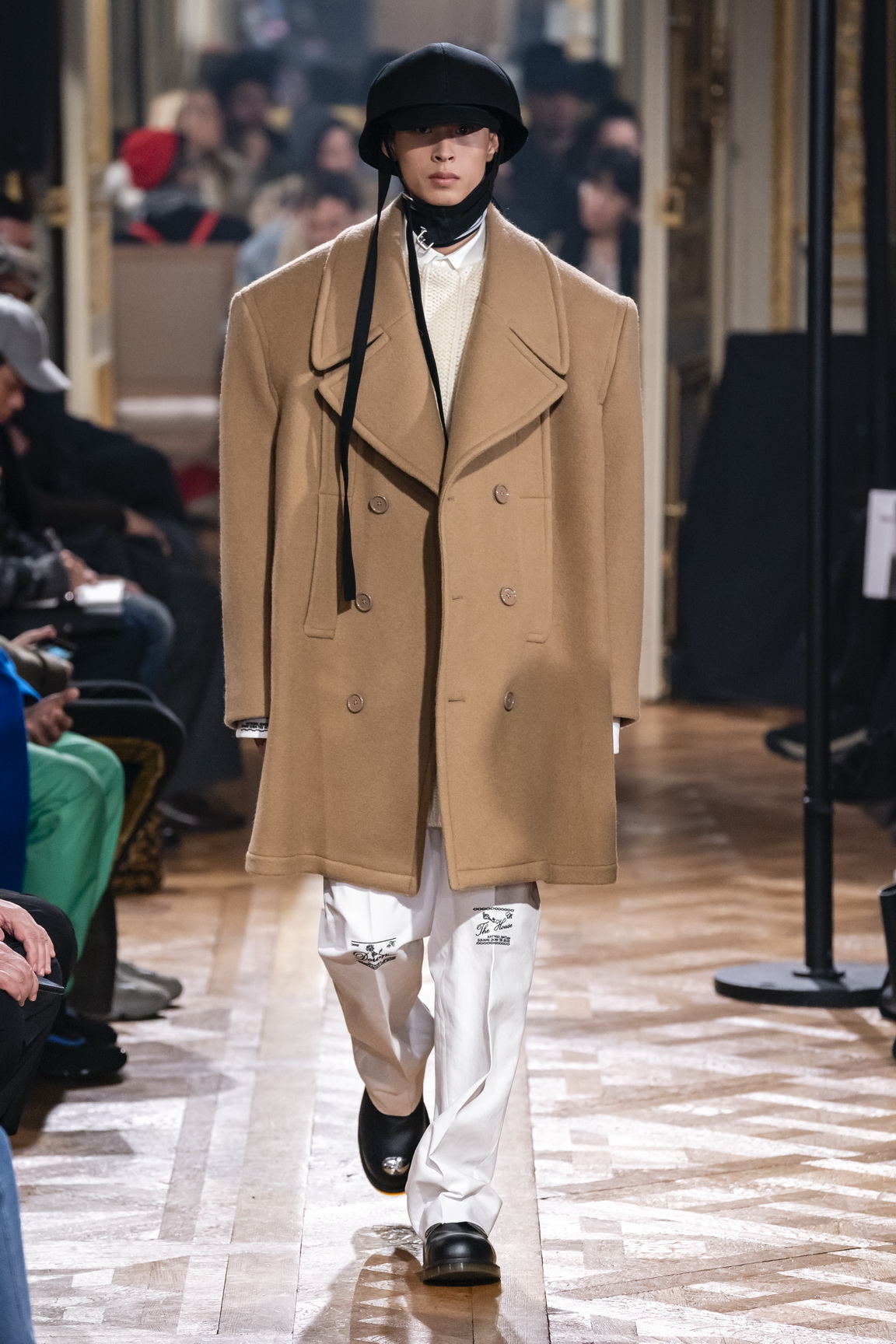
For spring/summer 19, the master of menswear declared that it was time to move beyond streetwear. “We need a new outline, a new shape,” he explained backstage back in June. “Of course I was part of it myself, but there are too many hoodies with prints out there. Something needs to shift.” His shift was “DIY meets couture” suiting for a new generation and he pushed it even further for autumn/winter 19.
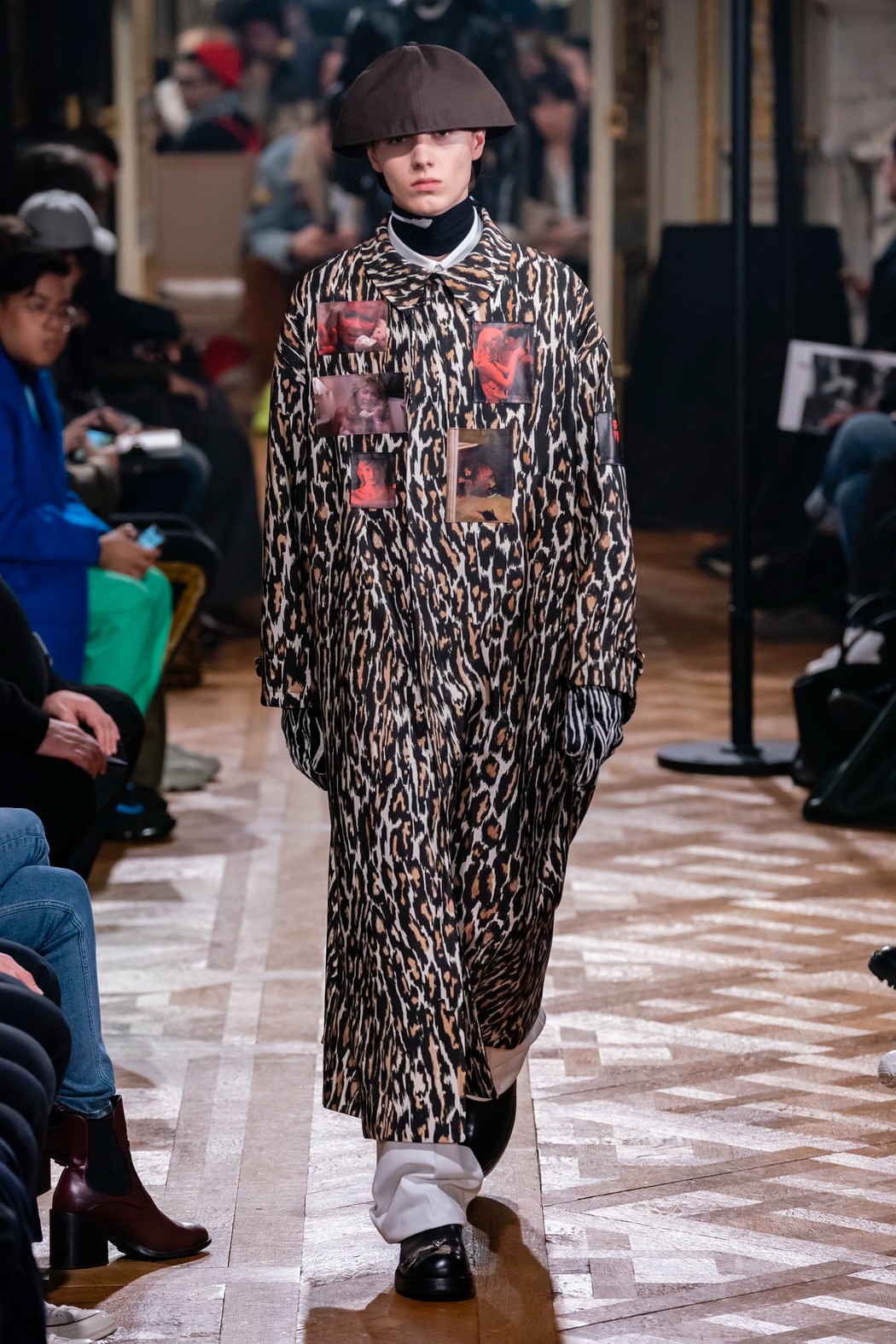
“It’s interesting how history does not necessarily define new creation and I think that counts just as much for fashion,” he said. “The memory of fashion is now erased. It doesn’t really matter what you do today. If it wasn’t done a year ago, most people don’t find it relevant anymore. I always found it very relevant. Being original, pushing, was always for me one of the main drives besides having an interesting dialogue with the people who are interested in the body of work we are trying to express,” he explained. So what’s next for Raf Simons? “Well, it’s been a long time since I’ve had the opportunity to pull back,” he pondered. “I’m more fascinated to see how I’m going to deal with that, and what is going to come next.” Who’s ready for the next wave of the Raf revolution?
